
Dada or Dadaism was an art movement of the European avant-garde in the early 20th century, with early centres in Zürich, Switzerland, at the Cabaret Voltaire. New York Dada began c. 1915, and after 1920 Dada flourished in Paris. Dadaist activities lasted until the mid 1920s.

Henri-Robert-Marcel Duchamp was a French painter, sculptor, chess player, and writer whose work is associated with Cubism, Dada, and conceptual art. He is commonly regarded, along with Pablo Picasso and Henri Matisse, as one of the three artists who helped to define the revolutionary developments in the plastic arts in the opening decades of the 20th century, responsible for significant developments in painting and sculpture. He has had an immense impact on 20th- and 21st-century art, and a seminal influence on the development of conceptual art. By the time of World War I, he had rejected the work of many of his fellow artists as "retinal", intended only to please the eye. Instead, he wanted to use art to serve the mind.

A found object, or found art, is art created from undisguised, but often modified, items or products that are not normally considered materials from which art is made, often because they already have a non-art function. Pablo Picasso first publicly utilized the idea when he pasted a printed image of chair caning onto his painting titled Still Life with Chair Caning (1912). Marcel Duchamp is thought to have perfected the concept several years later when he made a series of ready-mades, consisting of completely unaltered everyday objects selected by Duchamp and designated as art. The most famous example is Fountain (1917), a standard urinal purchased from a hardware store and displayed on a pedestal, resting on its side. In its strictest sense the term "ready-made" is applied exclusively to works produced by Marcel Duchamp, who borrowed the term from the clothing industry while living in New York, and especially to works dating from 1913 to 1921.
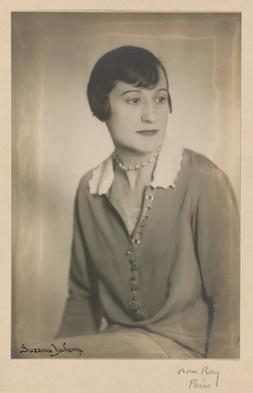
Suzanne Duchamp-Crotti was a French Dadaist painter, collagist, sculptor, and draughtsman. Her work was significant to the development of Paris Dada and modernism and her drawings and collages explore fascinating gender dynamics. Due to the fact that she was a woman in the male prominent Dada movement, she was rarely considered an artist in her own right. She constantly lived in the shadows of her famous older brothers, who were also artists, or she was referred to as "the wife of." Her work in painting turns out to be significantly influential to the landscape of Dada in Paris and to the interests of women in Dada. She took a large role as an avant-garde artist, working through a career that spanned five decades, during a turbulent time of great societal change. She used her work to express certain subject matter such as personal concerns about modern society, her role as a modern woman artist, and the effects of the First World War. Her work often weaves painting, collage, and language together in complex ways.
Conceptual art, also referred to as conceptualism, is art in which the concept(s) or idea(s) involved in the work take precedence over traditional aesthetic, technical, and material concerns. Some works of conceptual art, sometimes called installations, may be constructed by anyone simply by following a set of written instructions. This method was fundamental to American artist Sol LeWitt's definition of conceptual art, one of the first to appear in print:
In conceptual art the idea or concept is the most important aspect of the work. When an artist uses a conceptual form of art, it means that all of the planning and decisions are made beforehand and the execution is a perfunctory affair. The idea becomes a machine that makes the art.

Anti-art is a loosely used term applied to an array of concepts and attitudes that reject prior definitions of art and question art in general. Somewhat paradoxically, anti-art tends to conduct this questioning and rejection from the vantage point of art. The term is associated with the Dada movement and is generally accepted as attributable to Marcel Duchamp pre-World War I around 1914, when he began to use found objects as art. It was used to describe revolutionary forms of art. The term was used later by the Conceptual artists of the 1960s to describe the work of those who claimed to have retired altogether from the practice of art, from the production of works which could be sold.

Fountain is a readymade sculpture by Marcel Duchamp in 1917, consisting of a porcelain urinal signed "R. Mutt". In April 1917, an ordinary piece of plumbing chosen by Duchamp was submitted for an exhibition of the Society of Independent Artists, the inaugural exhibition by the Society to be staged at the Grand Central Palace in New York. When explaining the purpose of his readymade sculpture, Duchamp stated they are "everyday objects raised to the dignity of a work of art by the artist's act of choice." In Duchamp's presentation, the urinal's orientation was altered from its usual positioning. Fountain was not rejected by the committee, since Society rules stated that all works would be accepted from artists who paid the fee, but the work was never placed in the show area. Following that removal, Fountain was photographed at Alfred Stieglitz's studio, and the photo published in the Dada journal The Blind Man. The original has been lost.

Why not Sneeze, Rose Sélavy? is a 1921 "readymade" sculpture by Marcel Duchamp. Specifically, Duchamp considered this to be an "assisted Readymade", this being because the original objects of which the work is made up had been altered by the artist. They consist of a birdcage, 152 white cubes, a medical thermometer, a piece of cuttlebone, and a tiny porcelain dish. The birdcage is made of painted metal and contains several wooden perches.
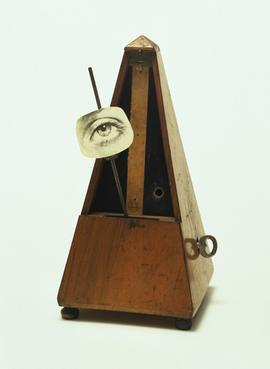
Object to Be Destroyed is a work by American artist Man Ray, originally created in 1923. The work consists of a metronome with a photograph of an eye attached to its swinging arm. After the piece was destroyed in 1957, later remakes in multiple copies were renamed Indestructible Object. Considered a "readymade" piece, in the style established by Marcel Duchamp, it employs an ordinary manufactured object, with little modification, as a work of art. Examples of the work are held in various public collections including Tate Modern London, MOMA New York and Reina Sofía, Madrid.
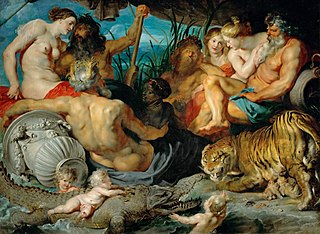
A work of art, artwork, art piece, piece of art or art object is an artistic creation of aesthetic value. Except for "work of art", which may be used of any work regarded as art in its widest sense, including works from literature and music, these terms apply principally to tangible, physical forms of visual art:
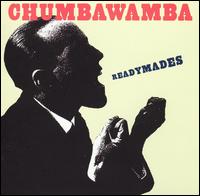
Readymades is the tenth studio album by Chumbawamba. It also features vocal samples from contemporary and traditional folk artists, some of whom Chumbawamba would go on to work with in the future. The album's title refers to the use of everyday objects as art by Marcel Duchamp.

Bicycle Wheel is a readymade from Marcel Duchamp consisting of a bicycle fork with front wheel mounted upside-down on a wooden stool.
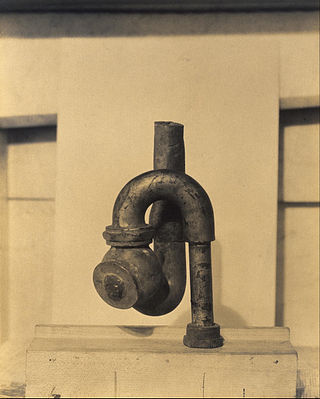
God is a circa 1917 sculpture by New York Dadaists Morton Livingston Schamberg and Elsa von Freytag-Loringhoven. It is an example of readymade art, a term coined by Marcel Duchamp in 1915 to describe his found objects. God is a 10½ inch high cast iron plumbing trap turned upside down and mounted on a wooden mitre box. The work is now in the Arensberg Collection in the Philadelphia Museum of Art.

The readymades of Marcel Duchamp are ordinary manufactured objects that the artist selected and modified, as an antidote to what he called "retinal art". By simply choosing the object and repositioning or joining, titling and signing it, the found object became art.

L.H.O.O.Q. is a work of art by Marcel Duchamp. First conceived in 1919, the work is one of what Duchamp referred to as readymades, or more specifically a rectified ready-made. The readymade involves taking mundane, often utilitarian objects not generally considered to be art and transforming them, by adding to them, changing them, or simply renaming and reorienting them and placing them in an appropriate setting. In L.H.O.O.Q. the found object is a cheap postcard reproduction of Leonardo da Vinci's early 16th-century painting Mona Lisa onto which Duchamp drew a moustache and beard in pencil and appended the title.

The Bottle Rack is a proto-Dada artwork created in 1914 by Marcel Duchamp. Duchamp labeled the piece a "readymade", a term he used to describe his collection of ordinary, manufactured objects not commonly associated with art. The readymades did not have the serious tone of European Dada works, which criticized the violence of World War I, and instead focused on a more nonsensical nature, chosen purely on the basis of a "visual indifference".

In Advance of the Broken Arm, also called Prelude to a Broken Arm, is a 1915 sculpture by Dada artist Marcel Duchamp that consisted of a regular snow shovel with "from Marcel Duchamp 1915" painted on the handle. One explanation for the title is that without the shovel to remove snow, one might fall and break an arm. This type of humor is not atypical of dadaist work.

Tulip Hysteria Co-ordinating is a fictitious work of art by Marcel Duchamp.

Belle Haleine, Eau de Voilette is a work of art by Marcel Duchamp, with the assistance of Man Ray. First conceived in 1920, created spring of 1921, Belle Haleine is one of the Readymades of Marcel Duchamp, or more specifically a rectified ready-made.















